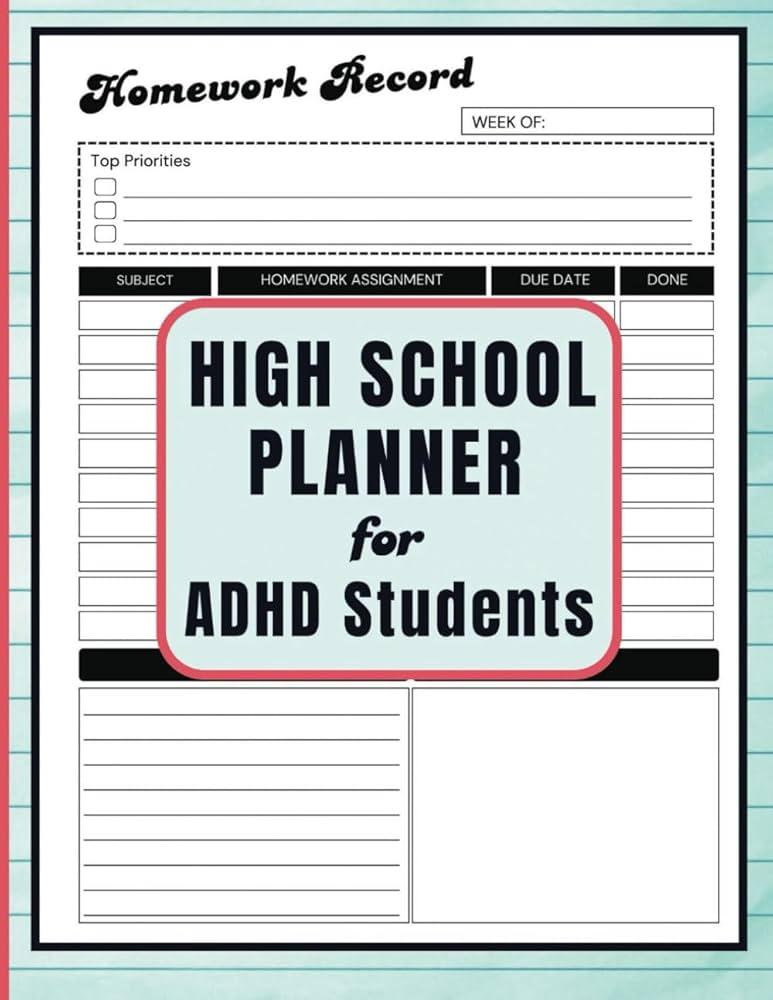
Teens Swap School Planners for iPad Notebooks
Teens Swap School Planners for iPad Notebooks: A Digital Shift in Student Organization
As the school bell rings and backpacks are thrown over shoulders, a subtle transformation is taking place in the realm of student organization. Gone are the days when colorful paper planners dictated a teen’s schedule, adorned with doodles and hastily scrawled homework assignments. Instead, a sleek, digital alternative has emerged: the iPad notebook. In this exploration of the evolving landscape of academic tools, we delve into how this technological shift is reshaping the way teens manage their time, assignments, and creative expressions. From note-taking apps to digital calendars, the shift from traditional planners to iPad notebooks reflects not only a preference for convenience but also a broader cultural embrace of technology in education. Join us as we investigate the implications of this change on students’ routines, learning experiences, and the future of school organization.
Q&A
Q&A: Teens Swap School Planners for iPad Notebooks
Q: Why are teens opting for iPad notebooks instead of traditional school planners?
A: Many teens find iPad notebooks to be more convenient and versatile. With the ability to easily organize notes, set reminders, and access digital resources, iPads streamline the way students manage their tasks and information. The interactive nature of digital tools also engages students more effectively than paper planners.
Q: What features of iPad notebooks are most appealing to students?
A: Students appreciate features like the ability to search for notes quickly, integrate multimedia elements like videos and images, and sync across devices. Additionally, apps for note-taking often include customizable templates and drawing tools, allowing for more expressive and personalized organization.
Q: Are there any downsides to using iPad notebooks?
A: While iPads offer many benefits, some students may face challenges such as distraction from notifications or temptation to browse social media during study sessions. There’s also the concern of battery life and potential technical issues that could hinder learning if not managed properly.
Q: How are schools responding to this trend?
A: Many schools are adapting by providing digital resources and training on effective iPad use in academic settings. Some are even integrating tablets into their curriculums, recognizing the growing role of technology in education and the need to equip students with skills for a digital world.
Q: What impact does this shift have on study habits and academic performance?
A: Research suggests that when used effectively, digital tools can enhance productivity and organization, leading to better study habits. However, it varies by individual; some students may thrive with the flexibility of digital planners, while others might find the transition challenging.
Meet N1X Da Queen Of A-Pop
N1X Da Queen Of A-Pop Sign up And Enter Her World Streaming Exclusive Music From N1X And Da Super Group Da Queens
Only On N1XMusic.com

Q: How can students ensure they’re using their iPads effectively for school?
A: Setting specific study times, disabling distracting apps during homework, and regularly backing up notes can help students maximize their iPad use. Additionally, learning shortcuts and utilizing organizational features within apps can greatly enhance their efficiency.
Q: What are parents saying about this shift?
A: Reactions from parents have been mixed. Some appreciate the tech-savvy approach and the potential for improved engagement, while others express concerns about screen time and the importance of teaching traditional organizational skills alongside digital proficiency.
Q: Will this trend continue in the future?
A: Given the rapid advancement of technology and its integration into daily life, it’s likely that the trend will continue. As more educational tools evolve and digital literacy becomes increasingly crucial, the reliance on devices like iPads for schoolwork may only grow stronger.
Q: Are there alternatives to iPads that teens are considering?
A: Yes, while iPads are popular, some students are exploring other tablets or hybrid laptops that offer similar functionalities. Additionally, there’s a segment of students who still prefer traditional notebooks for their tactile experience, citing benefits like better retention and fewer distractions.
Insights and Conclusions
As we navigate the evolving landscape of education, the trend of teens swapping traditional school planners for iPad notebooks marks a significant shift in how students organize their academic lives. This transition not only reflects the integration of technology in learning but also highlights the adaptability of the younger generation. While the digital realm offers streamlined methods for planning and productivity, it also invites conversations about balance and the importance of tactile learning experiences. As we look to the future, it will be fascinating to observe how these devices influence student engagement, creativity, and ultimately, their educational journeys. Whether in handwritten notes or digital formats, the core goal remains the same: to empower students to thrive in their academic pursuits.
Are you a content creator or someone with a big social media following?
Want to earn real cash promoting The Queen of A-POP?
Join the N1X Music Promoter Program — it’s as easy as:
1️⃣ Sign Up
2️⃣ Promote
3️⃣ Get Paid





No Comments